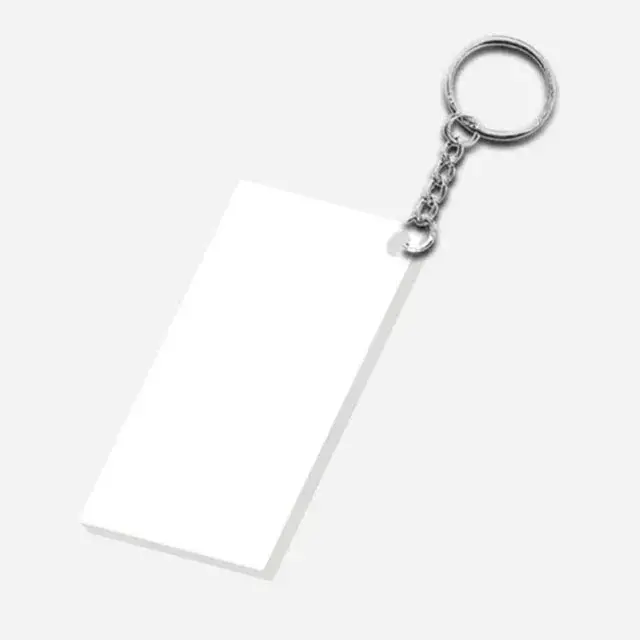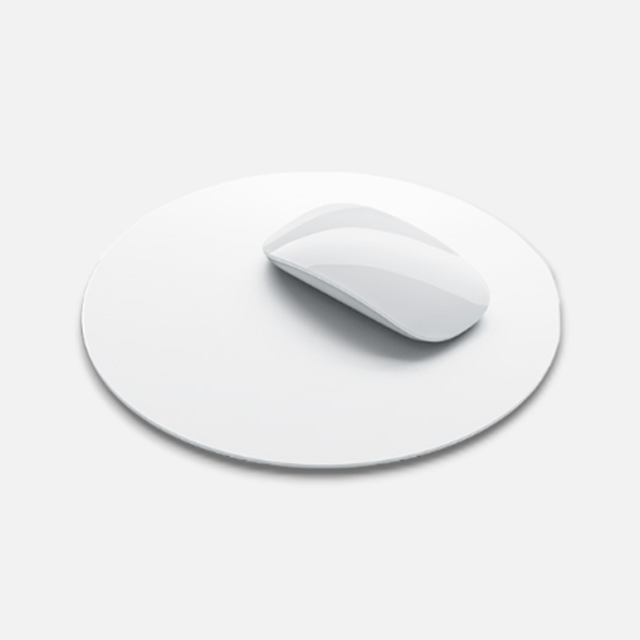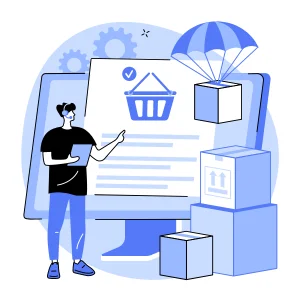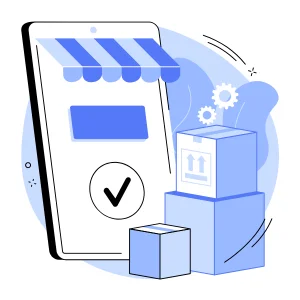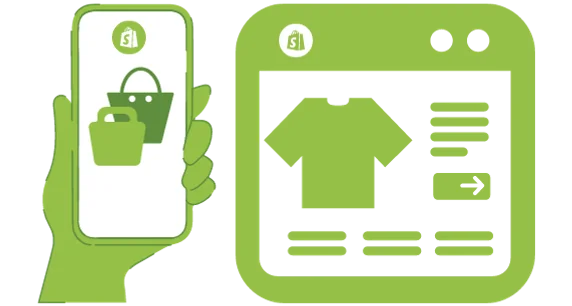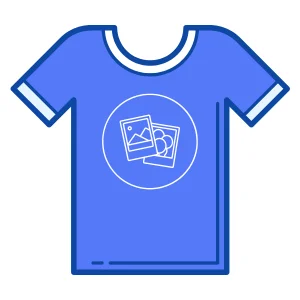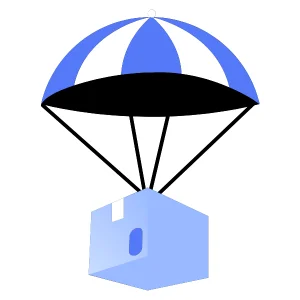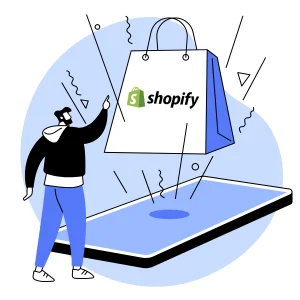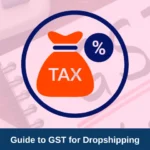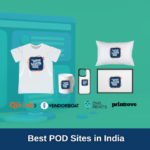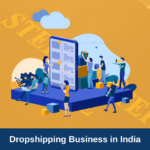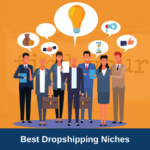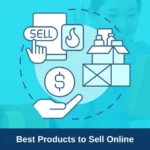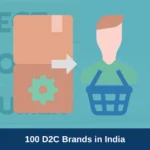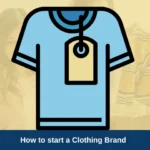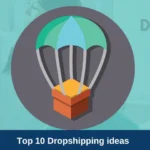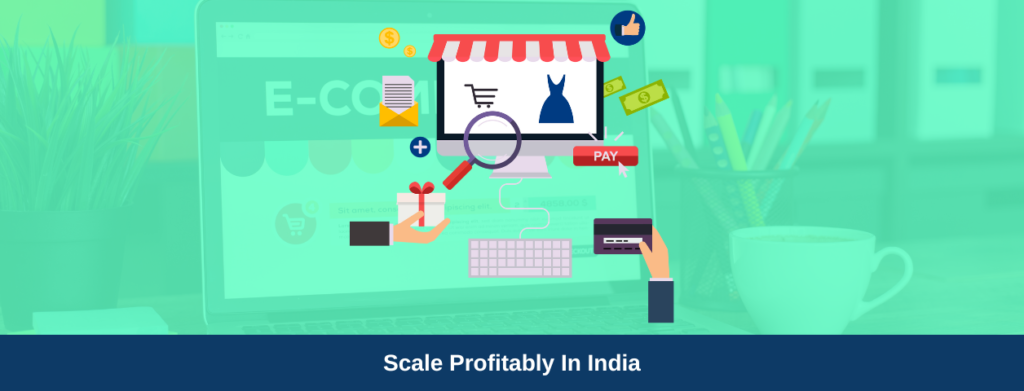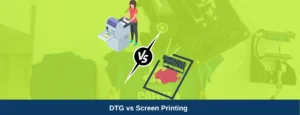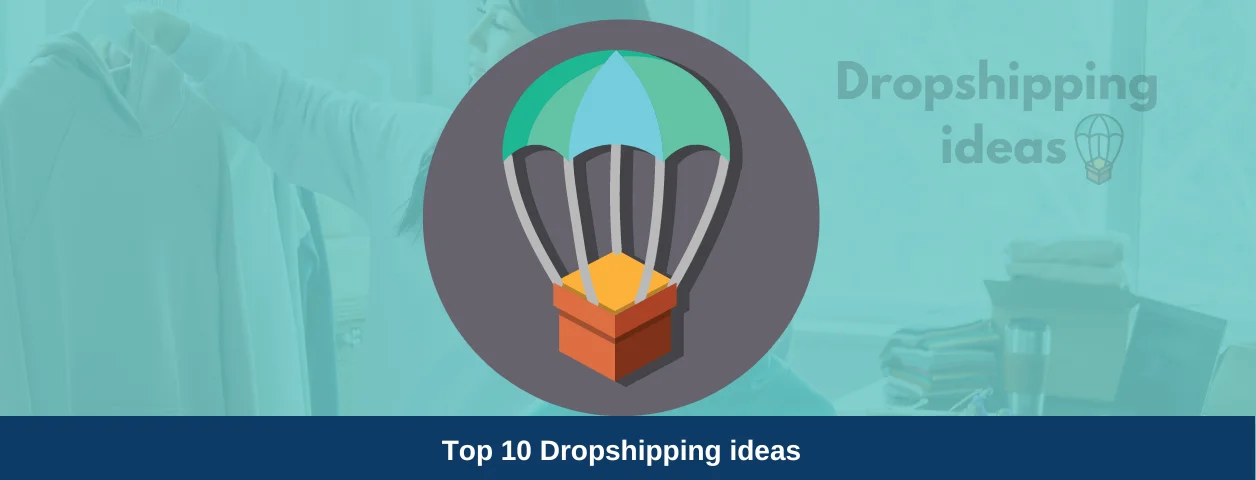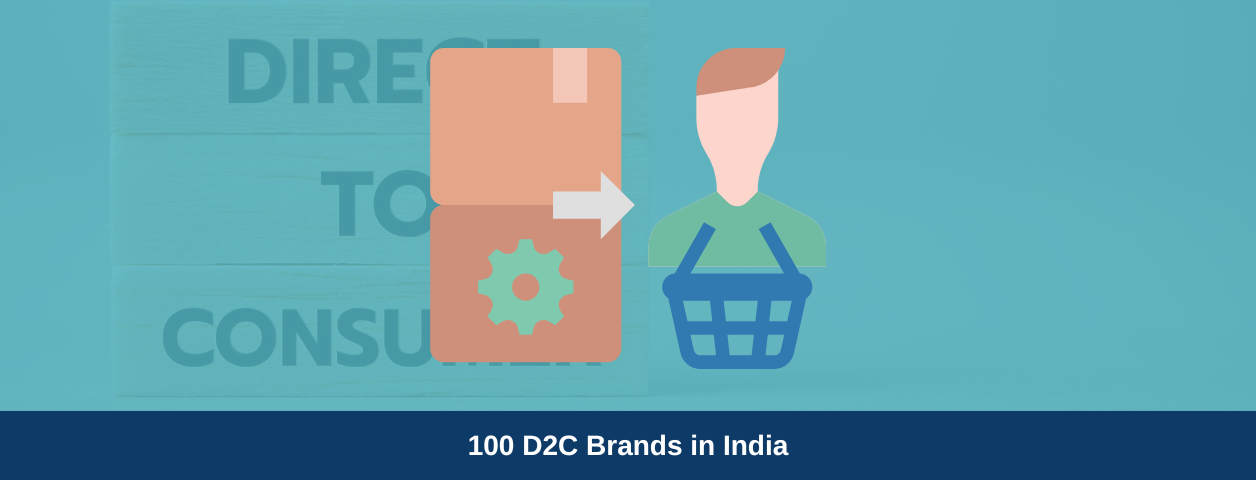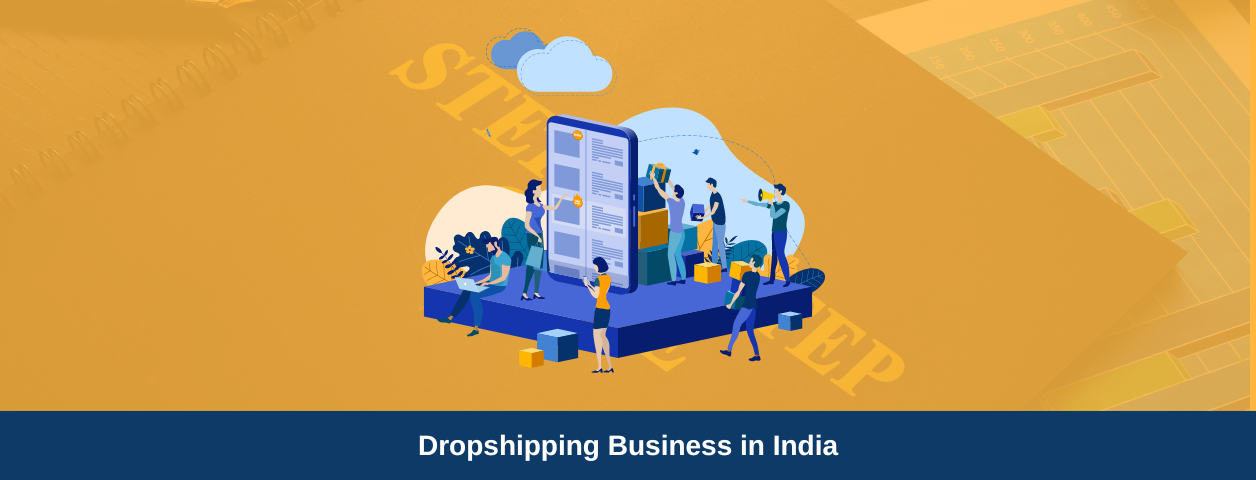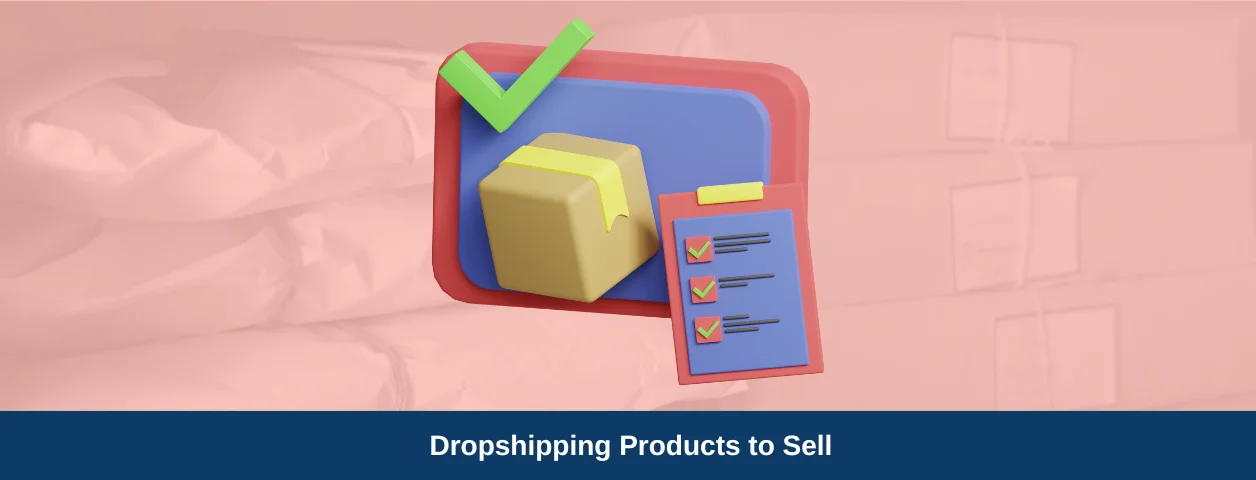The number of online shoppers is predicted to increase to 427 million by 2027, making the Indian e-commerce market worth over $350 billion by 2030.
These numbers indicate an opportunity to start a business in such a booming industry. However, the challenge is that the number of e-commerce businesses is expected to increase equally.
So unless you start early, you won’t be able to reap the benefits.
With the right planning and knowledge, you can launch an e-commerce business within 15 days. Today, we will share with you everything you need to know to start an e-commerce business in India.
So buckle up and get ready for some heavy dose of implacable knowledge.
How does the ecommerce business model work?
Ecommerce is the process of selling goods and services online.
The mechanism of e-commerce might seem complicated, especially if you are accustomed to offline business.
However, the basic business model boils down to a few key steps.
- The buyer visits the website,
- Finds the product/ service of their choice,
- Adds it to their cart,
- Proceeds to pay for it
- The products/ services are then delivered to them within an estimated time.
In essence, it’s about connecting buyers and sellers through an online platform.
Types of eCommerce businesses
Here’s a breakdown of the core models you’ll encounter in India.
1. Business-to-Consumer (B2C)
This is the most common model, where your e-commerce store sells directly to individual customers. You’ll handle everything from product sourcing and inventory management to marketing and order fulfillment.
Examples include Amazon, Flipkart, and Nykaa.
2. Consumer-to-Consumer (C2C)
Here, your platform acts as a marketplace for individual sellers to connect with buyers. You won’t hold any inventory yourself, and your revenue will likely come from transaction fees or listing charges.
Examples include OLX, eBay India, and Etsy.
3. Business-to-Business (B2B)
4. Dropshipping
This is a low-overhead model where you don’t hold any inventory yourself. Once a customer places an order, you forward it to a third-party supplier who ships it directly to the customer.
For example, Qikink is one of the top dropshipping suppliers in India.
Apart from these common ones, there are also B2G, D2C/ B2B2C, C2B and C2G, that we will discuss later on.
Here’s the visual representation of a Tshirt dropshipping process:
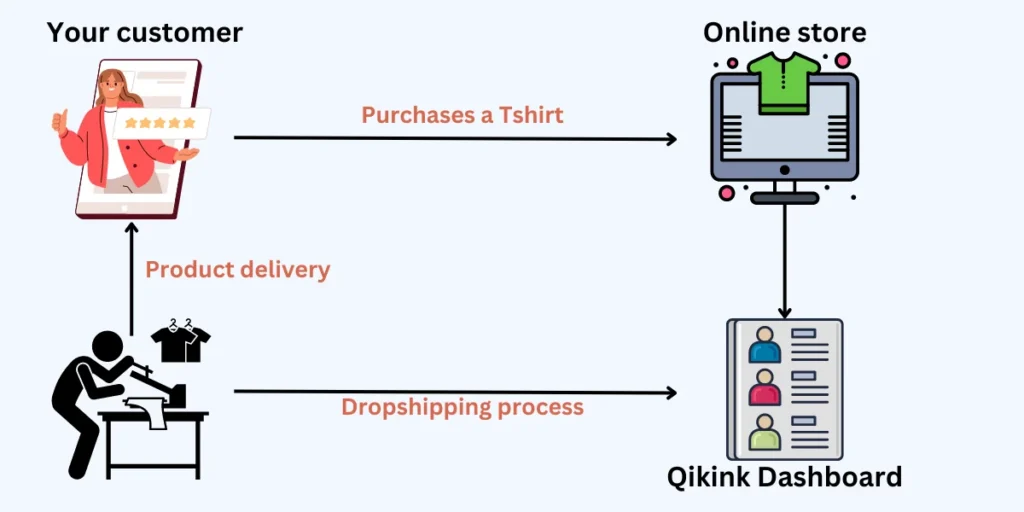
How to start an eCommerce business?
To successfully launch an e-commerce business that is meant to make you money, you need to follow a guideline.
Here’s a breakdown of the initial steps to take when launching your e-commerce business in India
Step 1. Validate your niche
Before diving headfirst into product selection, it’s crucial to validate your niche. This means ensuring there’s a genuine market demand for the products you plan to sell.
Here are some ways to find trending niches.
There is more than one way to find the right niche for your business.
1). Find what you’re passionate about and check its market
If you are passionate about something, you are more likely to put in extra work to make it succeed.
Plus, you can always take advantage of your knowledge about the niche you like and follow.
However, from a business perspective, you need to ensure that the niche also has a market. To check that,
Find The total addressable market (TAM):
TAM is a way of determining the maximum amount of revenue that can be generated in a certain market.
To find the TAM for your niche, you can purchase reports from established firms like Statista [statista.com] or Euromonitor [euromonitor.com] that cover your niche or a broader related market. These reports often contain TAM estimates.
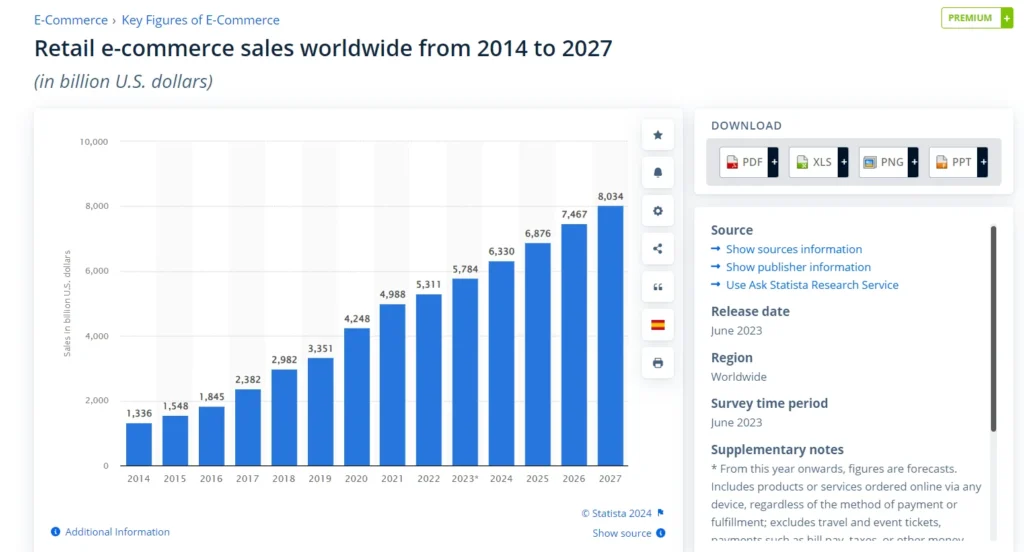
You can also check out the reports from Indian government agencies that are relevant to your niche. The Ministry of Commerce & Industry (MCI) publishes various reports and data on Indian industries.
Understand the size of the niche market
Once you have a TAM estimate, use industry research or educated guesses to determine what percentage of that market your niche represents.
For example, if you’re selling athletic wear for women (niche), the TAM could be the total Indian apparel market (broad).
2). Analyze Existing Businesses
Look for successful e-commerce businesses in India within your broader niche category. Unfortunately, there aren’t any business sales directories for Indian e-commerce businesses that can show you top-selling niches. So we have to take a different approach.
Start by exploring marketplaces like Flipkart and Amazon. Look at top-selling products and established sellers within your niche. Analyze their product categories and offerings.
Go to the bestseller page of each of the marketplaces, where things are always quite categorized.
For example Electronics, Clothing & Accessories, Home & Kitchen, etc.
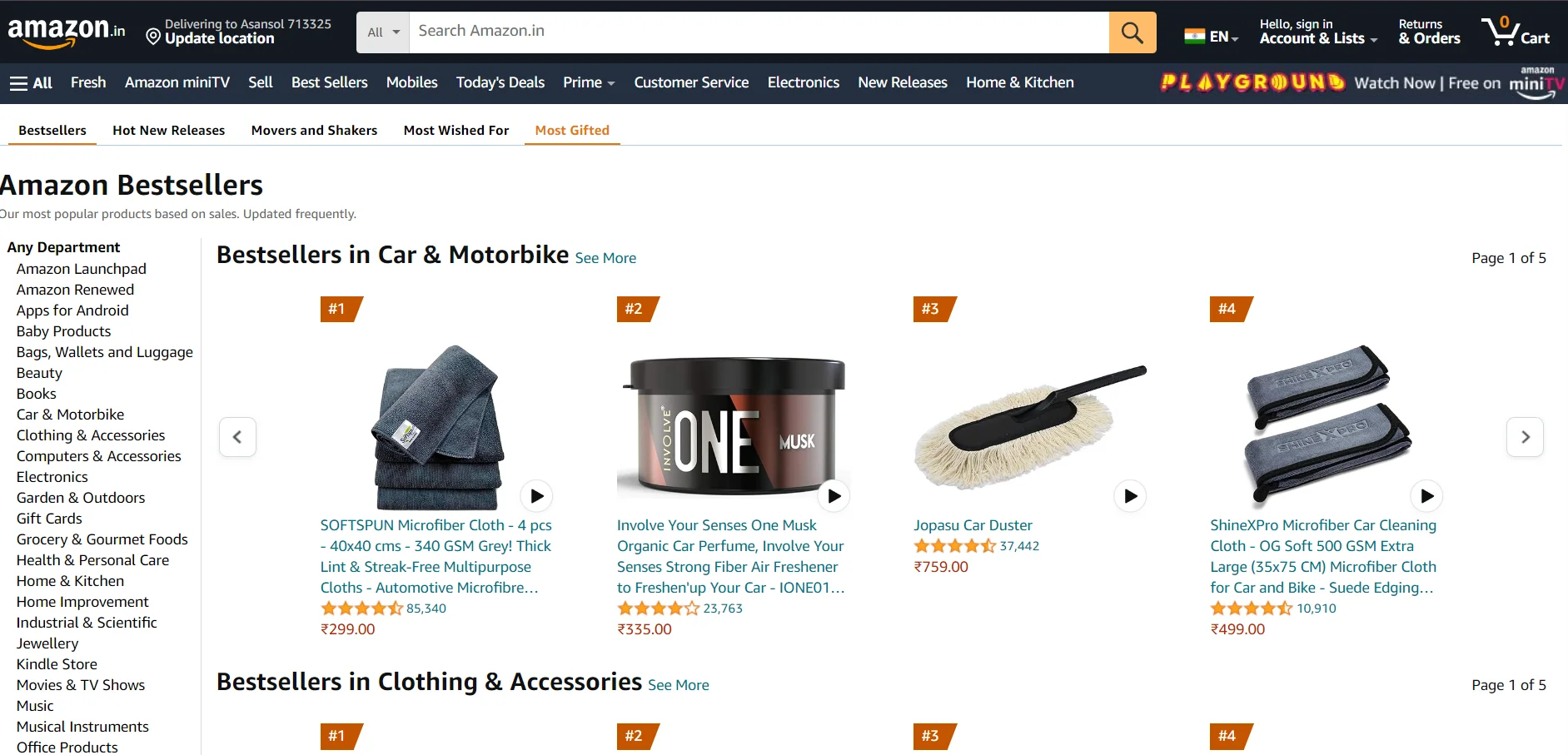
Within this page, you can then apply filters to narrow down your search, and find the top trending product in that niche.
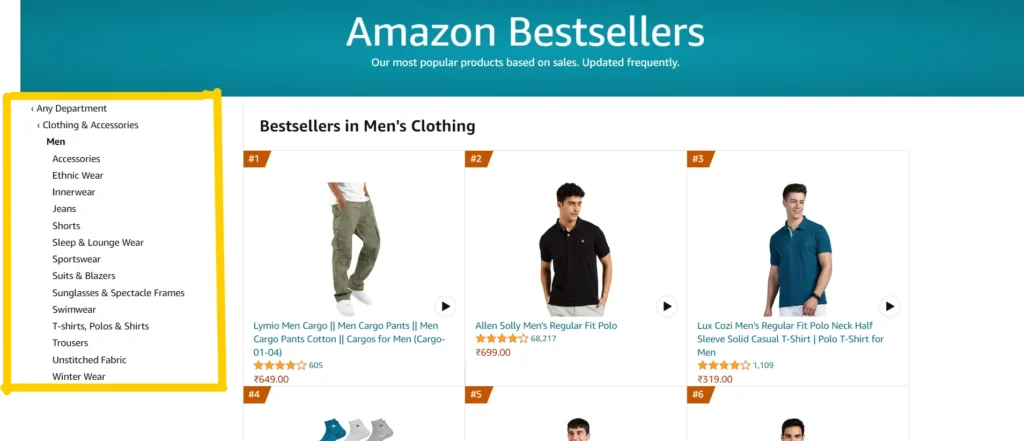
3). Use Trend Tracking Tools
The best free tool you can use to track trends will be Google Trends. This free tool helps you see search volume trends for keywords related to your niche.
Identify niches with rising search interest, indicating potential growth.
It even lets you compare two niches so you can understand which one can be more profitable.
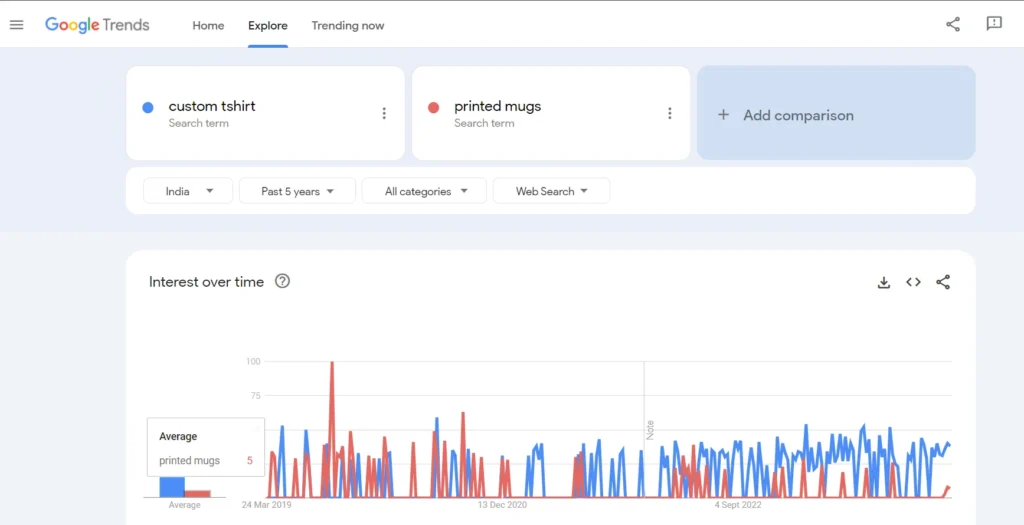
For example, here we have compared two niches, which are custom t-shirts and printed mugs. The search results show that the search volume for custom t-shirts has been constant over the past five years, making it a more reliable niche than printed mugs.
Step 2. Choose the right type of eCommerce business
We have already discussed some of the popular e-commerce business models in India. However, now let’s look at who the ideal candidates are and the necessary criteria to run the model.
Model | Ideal For |
B2C (Business to Consumer) | Businesses selling directly to consumers |
C2C (Consumer to Consumer) | Individuals selling to other consumers |
B2B (Business to Business) | Businesses selling products or services to other businesses |
Dropshipping | Businesses selling products without holding inventory |
B2G (Business to Government) | Businesses selling products or services to government agencies |
D2C (Direct to Consumer) | Brands selling directly to consumers, bypassing retailers |
B2B2C (Business to Business to Consumer) | Businesses selling products or services through other businesses that reach the final consumer |
C2B (Consumer to Business) | Individuals selling their skills or services to businesses |
C2G (Consumer to Government) | Individuals providing goods or services directly to government entities |
The easiest on the list is Dropshipping, which requires the least amount of knowledge and investment.
👉 Learn about how Qikink helps you start your dropshipping ecomemrce store that require no inventory management and initial investment.
Step 3. Product Sourcing
Having a validated niche and chosen your e-commerce model, the next crucial step is finding the right source for your products. Here’s a breakdown of popular sourcing options in India, each with its advantages and considerations.
1). Handmade
Here, you make your own products by sourcing materials, craftsmanship, etc.
Pros:
- Unique products: Stand out from the crowd with handcrafted items that resonate with customers seeking individuality.
- Potential for higher margins: Since you’re the creator, you have more control over pricing and profit margins.
- Control over quality and design: You are also in charge of quality and production so you can meet your exact specifications.
Cons:
- Limited scalability: Production capacity might be limited, especially if you’re making products yourself.
- Dependence on production skills: This approach requires the necessary skills or a partnership with skilled artisans.
- Potentially higher costs: Handcrafted items might involve higher material and labor costs than mass-produced goods.
2). Ready-made products from manufacturers
Here, you buy products from manufacturers, store them in your inventory and sell them to your customers.
Pros:
- Wide variety of products: Access a vast selection of ready-made products across various categories.
- Economies of scale: Benefit from lower costs per unit due to mass production.
- Potentially lower costs: Manufacturer pricing can be more competitive compared to handmade options.
Find how to find best print on demand products to sell.
Cons:
- Finding a reliable supplier: Researching and vetting manufacturers can be time-consuming. You can check out manufacturers like Qikink that primarily work with e-commerce business owners.
- Minimum order quantities (MOQs): Manufacturers might require minimum order quantities that could strain your initial investment.
3). Dropshipping
In dropshipping, you set up an online storefront and list products on them. After that, you connect that with your provider, and they handle the rest of the fulfilment of the order.
Pros:
- Low upfront costs: No need to invest in inventory, making it a budget-friendly option.
- No need to manage inventory: The dropshipping supplier handles storage, packing, and shipping.
- Allows for testing a variety of products: Experiment with different products without committing to large quantities.
Cons:
- Dependence on reliable dropshipping suppliers: Choose reputable suppliers who provide consistent service and high-quality products, like Qikink, which has been handling dropshipping for hundreds of Indian sellers who sell both nationally and internationally.

Step 4. Create branding
Your brand is more than just a logo; it’s the personality and identity of your business. A strong brand will resonate with your target audience and set you apart from the competition in the Indian ecommerce market.
Here are the important elements of creating a brand.
1. Brand name- Choose a name that’s easy to remember, pronounce, and spell. It should also be unique and available for trademarking. The name should also hint at the type of products you sell or the overall experience you offer.
Lastly, don’t forget to check for domain name availability before finalizing the brand name.
2. Logo- Your logo should be visually appealing, simple to understand, and work well across different mediums (website, print materials, social media).
Also, the colours, fonts, and imagery should reflect your brand personality and values.
3. Website design- Ensure your website is easy to navigate, with a clean and uncluttered interface.
In India, mobile internet usage is high, so make sure your website looks great and functions flawlessly on smartphones and tablets.
Along with that, always use high-quality product images on your website.
4. Social profiles- Identify the social media platforms where your target audience spends their time (Facebook, Instagram, etc.) and create engaging profiles.
There, you can share product updates, promotions, and behind-the-scenes content to build brand awareness and connect with potential customers.
Step 5. Legal registration for your ecommerce in India
Nowadays, you can easily register a business online, which is a must for your business.
You get multiple business structures to choose from, like- Limited Liability Partnership (LLP), Private Limited Company, One Person Company (OPC), and Public Limited Company (PLC).
Based on your plans, carefully pick the most suitable one and register your company.
For the registration process, you’ll need documents like
- A permanent account number,
- Any one of the identity proofs like- an Adhar card/ passport/driver’s license,
- Address proof documents (telephone bill/ electricity bill)
- And three passport-sized photos.
To register for the company online, you’ll need two more things.
- Director Identification Number (DIN)– It is an identification number for the company’s director.
- Digital Signature Certificate (DSC)– This is the digital signature of the company stakeholders.
- GST registration
You can then move on to registering on the Ministry of Corporate Affairs (MCA) Portal with the SPICe+ form and the necessary documents.
To ensure everything is alright, the director has to first register on the MCA portal and then gain access to different services such as filling out forms and viewing other public documents electronically.
Once the necessary documents are submitted, they are examined by the Registrar of Companies. After successful compilation, you’ll then receive a Certificate of Incorporation of the Company.
If you are still confused about the process, simply visit the Online Legal India website and get a consultation before registering your company.
Step 6. Business plan
The business plan is a written document where you outline the goals of your business and how you plan to achieve them.
We can give you a pre-made business plan, as it varies from business to business. But we can tell you the important parts of it and how to make a strong business plan.
The key aspects of a business plan are as follows.
- Unique selling propositions: Decide how you will make your ecomemrce store different than existing ones.
- Market Analysis: An analysis of the industry you’re operating in, including your target market, competitors, and trends.
- Marketing Plan: How you plan to reach your target market and sell your products or services.
- Management Team: Information about the key people who will be running the business. Decide whether you need freelancers or inhouse team to run your ecommecre business.
- Financial Projections: Forecasts of your business’s future financial performance, including revenue, expenses, and profits.
When making the business plan, keep these few things in mind to make it better.
- Have a clear understanding of of what your dreams are, so you can have the right direction.
- Assess how much capital you have and how much will you need.
- Envision what you want your business to achieve.
- Build a strong team of people who are equally passionate about your mission.
- Have a sales process to convert your leads into customers.
- Having enemies/ competitors can be a big motivator.
- Focus on building a supportive and positive company culture.
Step 7. Calculate expenses (shipping, product, packaging, order fulfillment)
Understanding your expenses is crucial for setting competitive prices, maximizing profits, and ensuring the long-term viability of your e-commerce business in India.
Here’s a breakdown of the key cost factors to consider.
1). Product Cost:
This is the cost you pay to acquire your product, whether it’s manufactured in-house, purchased from a wholesaler, or dropshipped from a supplier.
2). Packaging Cost:
This is the cost of materials used to protect your products during shipping. Consider factors like the size, weight, and fragility of your products.
You can also explore eco-friendly packaging options that are becoming increasingly popular with customers in India.
3). Shipping Cost
Ecommerce shipping can be a significant expense, so it’s essential to choose a reliable and cost-effective shipping partner.
Factor in factors like product weight, dimensions, and destination when comparing shipping rates from different providers.
4). Order Fulfillment Cost
It is the cost associated with picking, packing, and processing orders. If you’re dropshipping, these costs might be covered by your dropshipping supplier. However, if you’re managing inventory yourself, consider labor costs, warehouse storage fees (if applicable), and any technology or equipment used for order fulfillment.
Once you have estimated expenses for all of the above, you can use a cost calculator to help you estimate your total expenses and profit margins.
You can check out Qikink’s margin calculator for dropshipping and POD models.
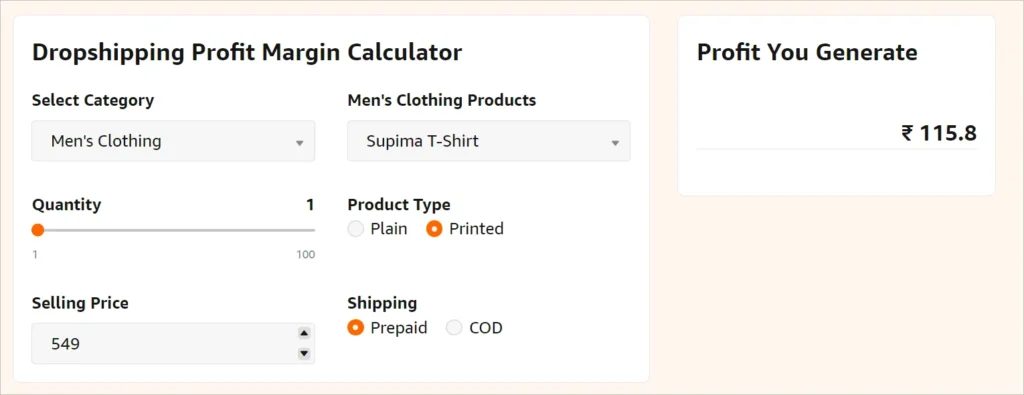
Step 8. Choose an ecommerce platform
Selecting the right e-commerce platform is vital for building your online store. Here’s a breakdown of the pros and cons of three popular options in India.
1). Shopify:
Pros:
- User-friendly interface with drag-and-drop functionality, ideal for beginners.
- Wide range of built-in features and functionalities for managing your store.
- Large app store with additional features and integrations.
- Scalable solution that can grow with your business.
Cons:
- Monthly subscription fees can add up over time.
- Limited customization compared to some other platforms.
- Transaction fees apply if you don’t use Shopify Payments.
If you have dropshipping model, your provider should have integration options with shopify. You can out Qikink’s Shopify integration process to get an overview.
2). Woocommerce:
Pros:
- Open-source platform, so it’s free to download and install (requires web hosting).
- Highly customizable, offering greater control over the look and feel of your store.
- Large plugin library offering extensive functionality.
Cons:
- Requires some technical knowledge to set up and manage.
- Ongoing maintenance and security updates are your responsibility.
- Finding and integrating the right plugins can be overwhelming for beginners.
Qikink also integrates smoothly with this platform. Understand how to proceed with WooCommerce.
3). Amazon:
Pros:
- Vast customer base on Amazon Marketplace, reaching a huge audience.
- Easy to set up and manage your product listings.
- Fulfillment by Amazon (FBA) option simplifies order fulfillment.
Cons:
- Limited control over branding and customer experience.
- High competition on the platform can make it difficult to stand out.
- Selling fees and referral fees can eat into your profit margins.
Choosing the right platform depends on your specific needs and priorities.
- For beginners: Shopify’s user-friendly interface makes it a good choice.
- For those seeking customization and control: WooCommerce offers more flexibility.
- For established brands with a large product catalog: Amazon Marketplace provides instant access to a massive audience.
Step 9. Optimize for conversion
Conversion rate optimization (CRO) is the process of increasing the percentage of visitors to your website who take a desired action, such as making a purchase.
Here are two main things to remember while doing CRO.
- Data is king: Data is essential for understanding your customers’ behavior and identifying areas for improvement. Use analytics tools to track website traffic, user behavior, and conversion rates.
- Do A/B Testing: A/B testing allows you to compare different versions of your website elements (e.g., product pages, calls to action) to see which ones convert better.
Along with that, you also need to craft user-friendly experiences. Your website should be easy to navigate and use. Thus, ensure a smooth checkout process and clear product information.
Check the below average conversion rate chart for ecommerce business in different industries:
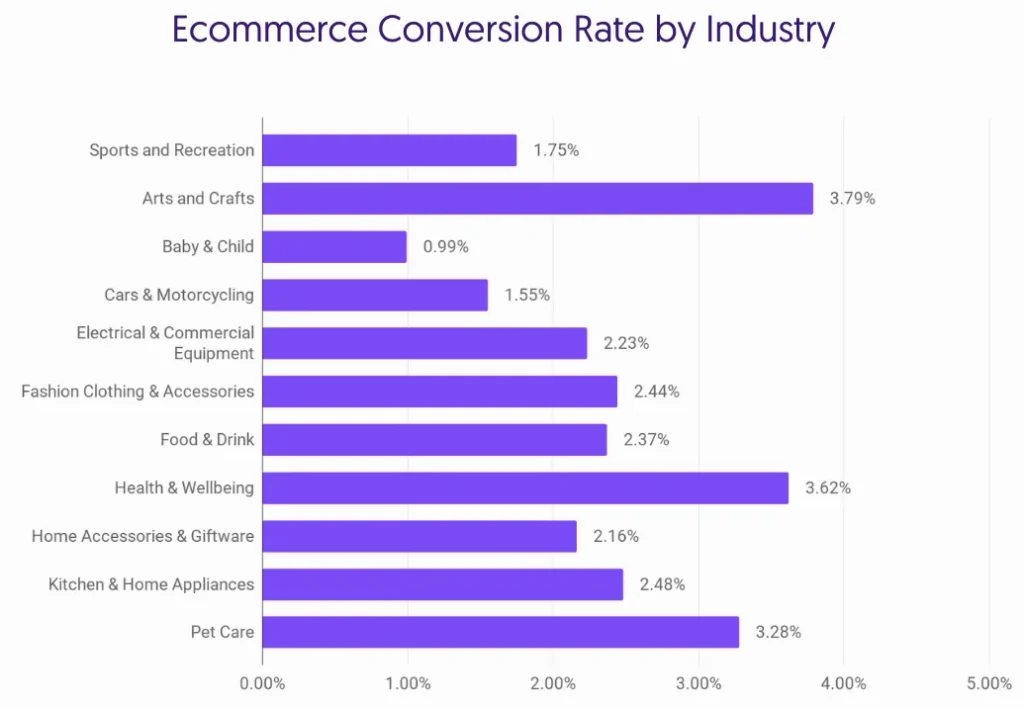
Step 10. Payment gateway
Selecting the right payment gateway is crucial for a seamless customer experience and secure online transactions.
Some of the most popular payment gateways in India include-
- Razorpay
- Paytm
- Cash-on-delivery (COD)
However, you can also check out popular payment gateways in India that we have discussed in detail.
When choosing the payment gateway for your website, ensure it has the factors mentioned below.
- Multiple payment method support: The gateway should support all the popular payment methods in India, including credit/debit cards, net banking, wallets (Paytm, Mobikwik, etc.), UPI, and COD.
- Low transaction fee: all the popular payment methods in India, including credit/debit cards, net banking, wallets (Paytm, Mobikwik, etc.), UPI, and COD.
- Security: Choose a payment gateway with solid security features to protect customer data and ensure PCI DSS compliance.
- Ease of Integration: Consider how easily the gateway integrates with your chosen e-commerce platform.
- Customer Support: Reliable customer support is essential for addressing any payment-related issues.
Step 11. Invest in content marketing
Content marketing is a powerful tool for attracting customers, building brand awareness, and ultimately driving sales in your Indian e-commerce business. There are three major parts of content marketing- Choosing the right channels, planning content and doing SEO.
1). Finding Right Channels:
To start content marketing, you need to first identify a suitable channel. Here are some popular options and when they are ideal.
- Instagram: Ideal for visually appealing content like product photos, lifestyle shots, and user-generated content (UGC).
- YouTube: Excellent for creating educational videos like product tutorials, how-to guides, and behind-the-scenes glimpses.
- Facebook: It is a versatile platform for sharing a mix of content formats, including blog posts, videos, and interactive polls.
- Twitter: Great for real-time engagement with customers, short product announcements, and customer service interactions.
2). Planning Content:
After finalizing channels, you can start working on your content calendar and content pillars. Remember to keep a good balance of educational and promotional content. As posting only promotional content can make your audience lose faith in you.
Here are some ideas:
Educational Content:
- Blog posts: Offer informative guides related to your niche or product category.
- Infographics: Present complex information in an easily digestible format.
- “How-to” videos: Demonstrate product functionality and address customer pain points.
Promotional Content:
- Product launches: Announce new arrivals and generate excitement.
- Promotional offers: Highlight discounts and special deals.
- Customer testimonials: Build trust and showcase positive customer experiences.
There can be a grey area where you create content that is both educational and promotional at the same time. For example, check out these videos where the business shows how their products can have different uses.
Start your online eCommerce store with Qikink
Turn your ideas into reality with Qikink, your one-stop partner for hassle-free e-commerce in India. Our dropshipping model lets you skip the upfront inventory and focus on creating amazing products.
Simply design your t-shirts, phone cases, mugs, and more with Qikink’s user-friendly tools, and we will handle the rest, like printing, packing, and shipping directly to your customers, all under your brand name.
Sign up for free with Qikink, connect your existing store, design your products, and hit publish to start selling today!
Frequently Asked Questions
Is eCommerce a profitable business in India?
Yes, e-commerce in India is a thriving market with a large and growing customer base. However, it requires careful planning, execution, and a competitive edge to be profitable.
Which product is best for an eCommerce store?
There’s no single “best” product. It depends on your target audience, market research, and business goals. Trending categories in India include fashion, home decor, electronics and personal care.
Is it free to start an eCommerce business?
It is not absolutely free to start eCommerce. Even if you choose a no-cost dropshipping model (like on Qikink), you’ll still be required to invest in a domain, storefronts, and business registration.
How much does it cost to start an eCommerce business?
The cost depends on your chosen model. Generally, expect costs for website development, marketing, and payment processing fees. Inventory costs can be minimized with dropshipping or Qikink’s POD model.
With over 10+ years of experience in the industry, Our founder has dedicated his career to helping brands achieve exponential growth through innovative print-on-demand solutions.














